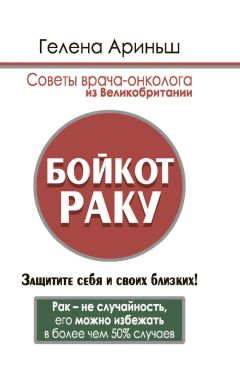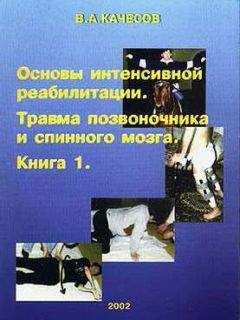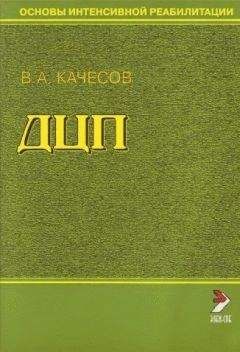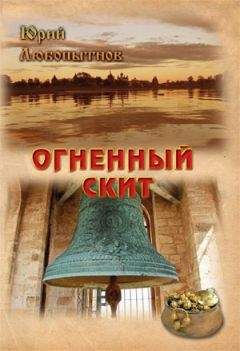Список литературы (глава 8)
1. World Cancer Report 2014; pp 143–150.
2. MacKie RM, Hauschild A, Eggermont AM. Epidemiology of invasive cutaneous melanoma. Ann Oncol 2009, 20 suppl 6: vi1–vi7.
3. Erdmann F, Lortet – Tieulent J, Schuz J, et al. International trends in the incidence of malignant melanoma 1953–2008 – are recent generations at higher or lower risk? Int J Cancer 2013, 132: 385–400.
4. Wehner MR, Chren MM, Nameth D, Choudhry A, Gaskins M, Nead KT, Boscardin WJ, Linos E. International prevalence of indoor tanning: a systematic review and meta-analysis. JAMA Dermatol 2014; 150(4): 390–400.
5. Schneider S, Kramer H. Who uses sunbeds? A systematic literature review of risk groups in developed countries. J Eur Acad Dermatol Venerol 2010; 24(6): 639–648.
6. O`Riordan DL, Field AE, Geller AC, et al. Frequent tanning bed use, weight concerns, and other health risk behaviors in adolescent females. Cancer Causes Control 2006, 17(5): 679–686.
7. Geller AC, Colditz G, Oliveria S, et al. Use of sunscreen, sunburning rates, and tanning bed use among more than 10 000 US children and adolescents. Pediatrics 2002; 109(6): 1009–1014.
8. Diffey B. Sunbeds, beauty and melanoma. Br J Dermatol 2007; 157(2): 215–216.
9. Autier P. Perspectives in melanoma prevention: the case of sunbeds. Eur J Cancer 2004; 40(16): 2367–2376.
10. Levine JA, Sorace M, Spencer J, Siegel DM. The indoor UV tanning industry: a review of skin cancer risk, health benefit claims, and regulation. J Am Acad Dermatol 2005; 53(6): 1038–1044.
11. Hoerster KD, Garrow RL, Mayer JA, et al. Density of indoor tanning facilities in 116 large US cities. Am J Prev Med 2009; 36(3): 243–246.
12. Jopson JA, Reeder AI. An audit of Yellow Pages telephone directory listings of indoor tanning facilities and services in New Zeland, 1992–2006. Aust N Z J Public Health 2008; 32(4): 372–377.
13. Matsumura Y, Ananthaswamy HN. Short-term and long-term cellular and molecular events following UV irradiation of skin: implications for molecular medicine. Expert Rev Mol Med 2002; 4(26): 1–22.
14. Molho-Pessach V, Lotem M. Ultraviolet radiation and cutaneous carcinogenesis. Curr Probl Dermatol 2007; 35: 14–27.
15. Kulesz-Martin M, Lagowski J, Fei S, et al. Melanocyte and keratinocyte carcinogenesis: p53 family protein activities and intersecting mRNA expression profiles. J Investig Dermatol Symp Proc 2005; 10(2): 142–152.
16. de Gruijl FR. P53 mutations as a marker of skin cancer risk: comparison of UVA and UVB effects. Exp Dermatol 2002; 11 suppl 1: 37–39.
17. Koehler MJ, Preller A, Kindler N, et al. Intrinsic, solar and sunbed-induced skin aging measured in vivo by multiphoton laser tomography and biophysical methods. Skin Res Technol 2009; 15(3): 357–363.
18. Gilchrest BA, Eller MS, Yaar M. Telomere-mediated effects on melanogenesis and kin aging. J Investig Dermatol Symp Proc 2009; 14(1): 25–31.
19. Gallagher RP, Lee TK. Adverse effects of ultraviolet radiation: a brief review. Prog Biophys Mol Biol 2006; 92(1): 119–131.
20. Cox HN. Actinic keratosis induced by a sunbed. BMJ 1994; 308(6934): 977–978.
21. Salisbury JR, Williams H, du Vivier AW. Tanning-bed lentigines: ultrastructural and histopathologic features. J Am Acad Dermatol 1989; 21(4): 689–693.
22. Karagas MR, Stannard VA, Mott LA, Slattery MJ, Spencer SK, Weinstock MA. Use of tanning devices and risk of basal cell and squamous cell cancers. J Natl Cancer Inst 2002; 94(3): 224–226.
23. Ibrahim SF, Brown MD. Tanning and cutaneous malignancy. Dermatol Surgery 2008; 34(4): 460–474.
24. Boyd AS, Shyr Y, King LE. Basal cell carcinoma in young women: an evaluation of the assossiation of tanning bed use and smoking. J Am Acad Dermatol 2002; 46(5): 706–709.
25. Faurschou A, Wulf HC. Ecological analysis of the relation between sunbeds and skin cancer. Photodermatol Photoimmunol Photomed 2007; 23(4): 120–125.
26. Abdulla FR, Feldman SR, Williford PM, Krowchuk D, Kaur M. Tanning and skin cancer. Pediatr Dermatol 2005; 22(6): 501–512.
27. Veierod MB, Weiderpass E, Thorn M, et al. A prospective study of pigmentation, sun exposure, and risk of cutaneous malignant melanoma in women. J Natl Cancer Inst 2003; 95(20): 1530–1538.
28. Cust AE, Armstrong BK, Goumas C, et al. Sunbed use during adolescence and early adulthood is associated with increased risk of early onset melanoma. Int J Cancer 2011; 128(10): 2425–2435.
29. International Agency for Research on Cancer Working Group on artificial UV light and skin cancers: a systematic review. Int J Cancer 2007; 120(5): 1116–1122.
30. Fitzpatrick TB. The validity and practicality of sun-reactive skin types I through VI. Arch Dermatol 1988; 124(6): 869–871.
31. Woo DK, Eide MJ. Tanning beds, skin cancer, and vitamin D: an examination of the scientific evidence and public health implications. Dermatol Ther 2010; 23(1): 61–71.
32. Weston WL, Lane AT, Morelli JG. Drug eruptions. In Color Textbook of Pediatric Dermatology. St Louis, M0; Mosby;2002: 287–297.
33. Gallagher RP, McLean DI, Yang CP, et al. Suntan, sunburn, and pigmentation factors and the frequency of acquired melanocytic nevi in children: similarities to melanoma – the Vancouver Mole Study. Arch Dermatol 1990; 126(6): 770–776.
34. Holmnan CD, Armstrong BK. Pigmentary traits, ethnic origin, benign nevi, and family history as risk factors for cutaneous malignant melanoma. J Natl Cancer Inst 1984; 72(2): 257–266.
35. American Optometric Association. Statement on Ocular Ultraviolet Radiation Hazards in Sunlight. St Louis, M0:American Optometric Association, 1993.
36. Wong SC, Eke T, Ziakas NG. Eclipse burns: a prospective study of solar retinopathy following the 1999 solar eclipse. Lancet 2001; 357 (9251): 199–200.
37. American Academy of Ophthalmology. What are cataracts? www.aao.org/eyesmart/know/cataracts.cfm.
38. Shah CP, Weis E, Lajous M, Shields JA, Shileds CL. Intermittent and chronic ultraviolet radiation: a brief review. Prog Biophys Mol Biol 2006; 92(1): 119–131.
39. Singh AD, Rennie IG, Seregard S, Giblin M, McKenzie J. Sunlight exposure and pathogenesis of uveal melanoma: a meta-analysis. Ophthalmology 2005; 112(9): 1599–1607.
40. Ullrich SE. Sunlight and skin cancer: lessons from the immune system. Mol Carcinog 2007; 46(8): 629–633.
41. Ho WL, Murphy GM. Update on the pathogenesis of post-transplant skin cancerin renal transplant recipients. Br J Dermatol 2008; 158(2): 217–224.
42. International Agency for Research on Cancer Working Group on Artificial UV Light and Skin Cancer. The association of use of sunbeds with cutaneous malignant melanoma and other skin cancers: a systematic review. Int J Cancer 2007; 120 (11): 2526. Int J Cancer 2007; 120 (5): 1116–1122.
43. Prevention and treatment of sunburn. Med Lett Drugs Ther 2004; 46(1184): 45–46.
44. Thompson SC, Jolley D, Marks R. Reduction of solar keratoses by regular sunscreen use. N Engl J Med 1993; 329(16): 1147–1151.
45. Naylor MF, Boyd A, Smith DW, Cameron GS, Hubbard D, Nelder KH. High sun protection factor sunscreens in the suppression of actinic neoplasia. Arch Dermatol 1995; 131(2): 170–175.
46. A new sunscreen agent. Med Lett Drugs Ther 2007; 49(1271): 84; Med Lett Drugs Ther 2007; 49(1261): 41–43.
47. American Academy of Pediatrics. Pediatric Environmental Health. Etzel RA, Balk SJ, eds. 2nd ed. Elk Grove Village, IL: American Academy of Pediatrics; 2003.
48. Tuchinda C, Srivannaboon S, Lim HW. Photoprotection by window glass, automobile glass, and sunglasses. J Am Acad Dermatol 2006; 54(5): 845–854.
49. WHO 2006. Air Quality Guidelines. Global Update 2005. Geneva: WHO. Available at http://www.euro.who.int/__data/assets/pdf_file/0005/78638/E90038.pdf.
50. Samet JM, Cohen AJ. Air pollution. In: Schottenfeld D, Fraumeni JF, eds. Cancer Epidemiology and Prevention 2006.New York: Oxford University Press, pp. 355–381.
51. Brauer M, Amann M, Burnett RT, et al. Exposure assessment for estimation of the global burden of disease attributable to outdoor air pollution. Environ Sci Technol 2012, 46: 652–660.
52. Claxton LD, Woodall GM. A review of the mutagenicity and rodent carcinogenecitu of ambient air. Mutat Res 2007; 636: 36–94.
53. Lewtas J. Air pollution combustion emissions: characterization of causative agents and mechanism associated with cancer, reproductive, and cardiovascular effects. Mutat Res 2007; 636: 95–133.
54. HEI Panel on the Health Effects of Traffic-related Air Pollution. Traffic Related Air Pollution: a critical review of the literature of emissions, exposure, and health effects. HEI Special Report 17. Boston, MA: Health Effects Institute.
55. Brunekreef B, Beelen R, Hoek G, et al. Effects of Long-term Exposure to Traffic Related Air Pollution on respiratory and Cardiovascular Mortality in the Netherlands: The NLCS-Air Study. HEI Research Report 139. Boston, MA: Health Effects Institute.
56. Turner MC, Krewski D, Pope CA 3d et al. Long-term ambient fine particulate matter air pollution and lung cancer in a large cohort of never-smokers. Am J Respir Crit Care Med 2011; 184: 1374–1381.
57. IARC 2012. Radiation. IARC Monogr Eval Carcinog Risks Hum 2012; 100D: 1–437.
58. Lim SS, Vos T, Flaxman AD, et al. A comparative risk assessment of burden of disease and injury attributable to 67 risk factors and risk factor clusters in 21 regions, 1990–2010: a systematic analysis for the Global Burden of Disease Study 2010. Lancet 2012; 380: 2224–2260.
59. Hosgood HD 3d, Wei H, Sapkota A, et al. Household coal use and lung cancer: a systematic review and meta-analysis of case-control studies, with an emphasis on geographic variation. Int J Epidemiol 2011; 40: 719–728.
60. Lan Q, Chapman RS, Schreinemachers DM, et al. Household stove inmprovement and risk of lung cancer in Xuanwei, China. J Natl Cancer Inst 2002; 94: 826–835.
61. Burnett M.E., Wang S.Q. Current sunscreen controversies: a critical review. Photodermatology, Photoimmunology & Photomedicine 2011, 27 (2): 58–67.
62. Richardson SD, Plewa MJ, Wagner ED et al. Occurrence, genotoxicity, abd cancerogenicity of regulated and emerging disinfection by-products in drinking water: a review and roadmap for research. Mutat Res 2007; 636: 178–242.
63. IARC 2004. Some drinking water didinfectants and contaminants, including arsenic. IARC Monogr Eval Carcinog Risks Hum 2004; 84: 1–477.
64. Flanagan SV, Johnston RB, Zheng Y. Arsenic in tube well water in Bangladesh: health and economic impacts and implications for arsenic mitigation. Bull World Health Organ 2012; 90: 839–846.
65. Chatterjee D, Halder D, Majumder S, et al. Assessment of arsenic exposure from groundwater and rice in Bengal Delta Region, West Bengal, India. Water Res 2010; 44: 5803–5812.
66. Bundshuh J, Litter MI, Parvez F, et al. One century of arsenic exposure in Latin America: a review of history and occurrence from 14 countries. Sci Total Environ 2012; 429: 2–35.
67. Ritter L, Solomon K, Sibley P et al. Sources, pathways, and relative risks of contaminants in surface water and groundwater: a perspective prepared for the Walkerton inquiry. J Toxicol Environ Health A 2002; 65: 1–142.
68. Pearce MS, Salotti JA, Little MP, et al. Radiation exposure from CT scans in childhood and subsequent risk of leukaemia and brain tumours: a retrospective cohort strudy. Lancet 2012; 380: 499–505.
69. Folley JH, Borges W, Yamawaki T. Incidence of leukaemia in survivors of the atomic bomb in Hiroshima and Nagasaki, Japan. Am J Med 1952; 13: 311–321.
70. Preston DL, Pierce DA, Shimizu Y, et al. Effect of recent changes in atomic bomb survivor dosimetry on cancer mortality risk estimates. Radiat Res 2004; 162: 377–389.
71. Preston DL, Ron E, Tokuoka S et al. Solid cancer incidence in atomic bomb survivors:1958–1998. Radiat Res 2007;168: 1–64.
72. Cardis E, Vrijheid M, Blettner M, et al. The 15-country collaborative study of cancer risk among radiation workers in the nuclear industry: estimates of the radiation-related cancer risks. Radiat Res 2007; 167: 396–416.
73. Muirhead CR, O`Hagan JA, Haylock RG et al. Mortality and cancer incidence following occupational radiation exposure: third analysis of the National Registry for Radiation Workers. Br J Cancer 2009; 100: 206–212.
74. Laurier D, Jacob S, Bernier MO, et al. Epidemiological studies of leukaemia in children and young adults around nuclear facilities: a critical review. Radiat Prot Dosimetry 2008; 132: 182–190.





